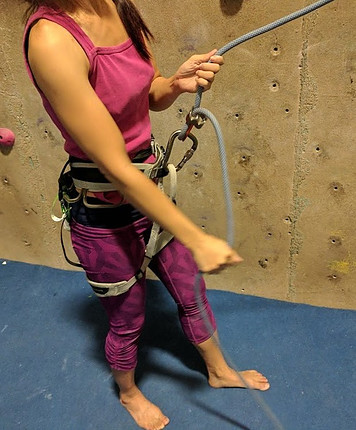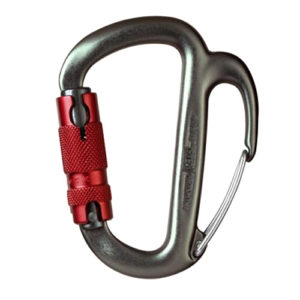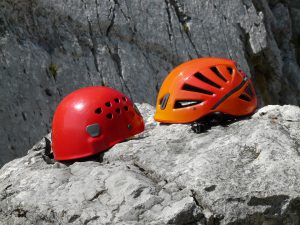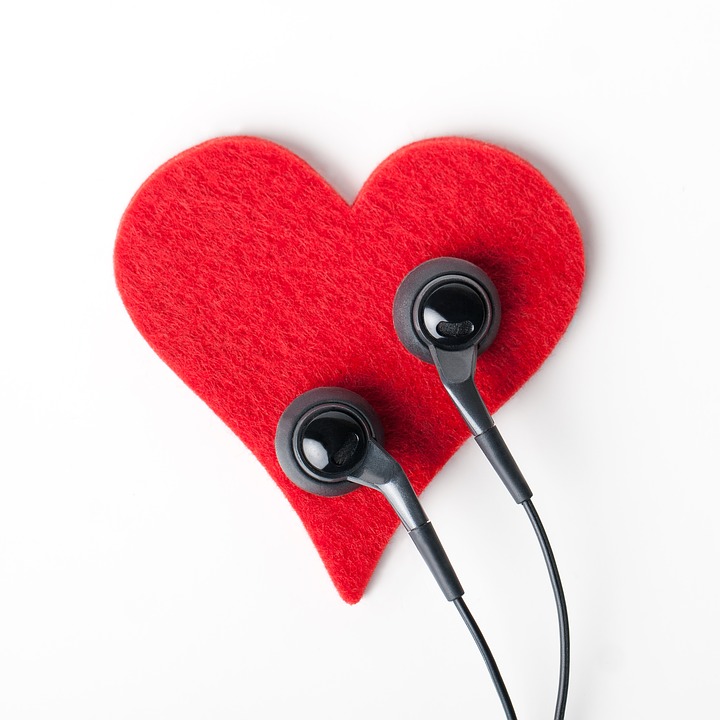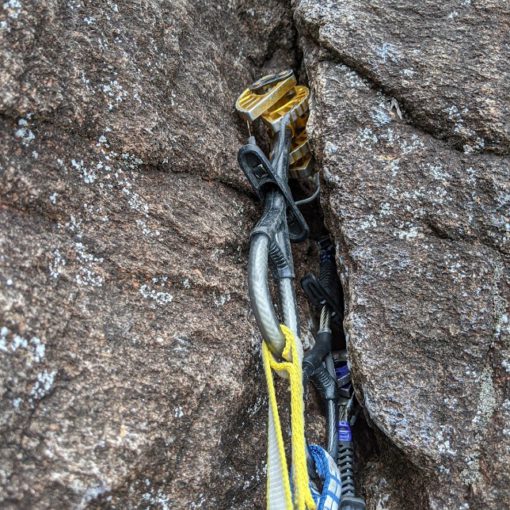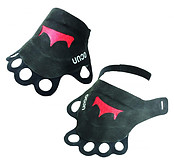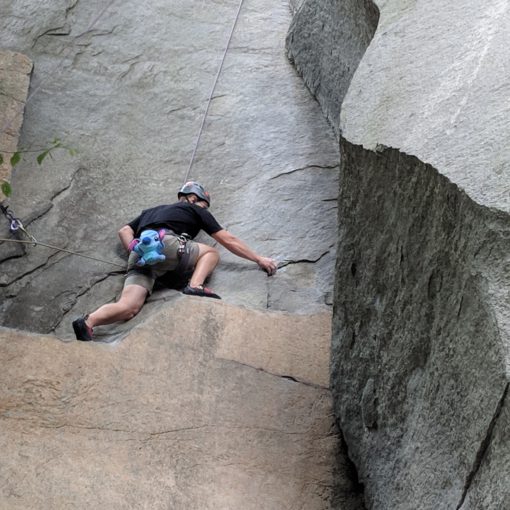As rock climbing becoming more popular over time, I see more couples climbing together. It is a great date night for couples instead of the traditional going out with a movie and dinner.
In general, the ladies are lighter and smaller than the gentlemen so there is a difference in the weight ratio when it comes to climbing and belaying. This may be a factor that makes the couple nervous to try if they are new to climbing.
For me, I don’t remember being nervous though. I started climbing a year before my husband started so I found other ladies to climb with. This helped me with belaying confidence over time.
In this article, we will have tips specifically for the lightweight belayer to add ammunition to the belaying skill and boost your confidence. To learn more about the basics of belaying, please visit my articles:
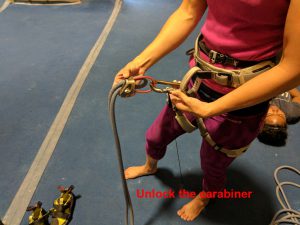
|

|
|---|
If you are new to climbing and belaying, I would recommend practicing climbing indoor first to understand and learn the basics before climbing outdoor on your own. If you are hiring a guide for outdoor climbing then go for it because you will definitely learn so much more than climbing indoor.
Good Belaying Habits
Create good belaying habits is definitely a plus especially when you are climbing outdoor. Here is a checklist of good habits to develop. These habits apply mostly for lead belaying but it is also good practice with the top rope as well:
- Wear tennis shoes or closed-toe shoes especially for climbing outdoor to help brace your feet against the wall or rocks.
- While flaking, inspect your rope for any visible wear, tear, or damages.
- Survey the area you will be climbing and make sure you are on even ground with no obstacles such as water bottles or obstacles lying around next to your feet.
- Stand close to the wall (not directly underneath the climber) off to the left or right side of the climber.
- When belaying, make sure to have your rope in a neat pile close to you and avoid standing on the rope.
- Move around accordingly to follow your climber when necessary for visible movements, clipping, etc. This help with your visibility so you can support your climber at all time.
- Always have your dominant hand on the brake at all times even when you are using an assisted braking device.
Stance
Have a solid stance with shoulder-width apart in a small lunge position. Use the non-dominant foot in the front and slightly bent. You should be relaxed while being alert and ready. Make sure to stand close to the wall so you can brace your feet if you need more leverage. It is also helpful when the climber fall, you can be prepared to brace your feet against the wall while you are being pulled up in the air. Keep your knees slightly bent almost into a squat position to absorb both knees into the wall effortlessly. This will help create more force and weight for you as an anchor.

Dynamic or Soft Catch
A dynamic or soft catch is an advanced technique where the belayer is anticipating a fall from the climber. The belayer jumps as the climber begins to weigh the rope with his/her fall. This process introduces the upward momentum from the jump which then softens the catch. I do not understand the physics behind this. It is too much for me to comprehend at this time. I do know it works. If interested to know more about physics, please visit Climbing.com (under the process of dynamic belaying) for a better physic explanation. This particular process is not ideal for all circumstances especially when the climber is only a few clips off the ground so be aware.
Now, where does the lightweight belayer come into place for a soft catch? Being a lightweight belayer, most of the time you will be pulled up off the ground when the climber falls. Automatically, you are doing a soft catch so there is no thinking on your part. Just relax, allow the rope to pull you up, and be ready to brace your feet against the wall with your knees bent – almost in a sitting position.
Cool Tools
Most climbing gyms provide 50 lb sandbags or a rope anchor to assist the lightweight belayer so that also helps the belayer from being pulled up too high off the ground. There is also the single loop or double loop rope to the anchor for top-roping. The double loop around the anchor creates more friction and drag to assist the belayer from being lifted off the ground. To read more about the loops, you can visit my article on “What is Top Rope indoor vs outdoor“.
There is a small list of optional gear for you to check out in helping with the belaying. What would help most is increasing the friction of the rope slowing down the fall so that you can catch the climber quickly, effectively, and softly without causing stress on your hands or head (mentally):
- Assisted Braking Belay Device – This is a special belay device that assists in the braking and creates more friction to aid with the belaying. There are quite a few in the climbing market. I have written an article sharing more information about the assisted braking belay device to help you choose. Please visit ===> “What is Assisted Braking Belay Device – Which One Works Best for You?” for more information.
- Frieno Carabiner–

Freino This is a carabiner made by Petzl to use with your belay device. It gives additional friction to the rope. To learn more about its function, please visit “Rock Climbing Carabiner – A Petzl Freino Review.”
- Ohm –

Ohm This is an assisted braking resistor made by Edelrid. It is a device that increases the friction on the rope to slow down the climber when falling and gives the belayer more control in braking and lowering. It is used primarily for lead climbing attached directly to the rope and clip into the first bolt. If interested to know more about the Ohm, please read “Edelrid Ohm Assisted Braking Resistor Review“.
- Belay Gloves – The gloves are fantastic for preventing rope burns. As a lightweight belayer, the rope will move through your hands quicker because of the weight ratio. Your braking hand is another friction element to slow down the fall. The gloves with a nice sticky grip will buffer the heat from your hand. Ahhhh… To find what gloves work best for you, visit the article called “Rock Climbing Gloves – Do We Really Need Them?“
- Helmets – Wearing a helmet is optional for indoor.
 However, I would totally recommend wearing a helmet for outdoor climbing as well as belaying. Those helmets protect your brain and it is totally worth it. Want to look for a helmet that works for you? Click on my article called “Climbing Helmet Review – Do We Need One for Climbing?“
However, I would totally recommend wearing a helmet for outdoor climbing as well as belaying. Those helmets protect your brain and it is totally worth it. Want to look for a helmet that works for you? Click on my article called “Climbing Helmet Review – Do We Need One for Climbing?“
Conclusion
Regardless of any tools, you use to assist with the belaying as a lightweight belayer, I recommend knowing the fundamentals of belaying which includes being alert, create good belaying habits, and have a solid stance. The key is to keep practice belaying just like keep climbing. It will help build confidence and develop your belaying skills over time.
Because I belay my husband who is 1.5 times my weight, I learned to become a better and more efficient belayer. The extra tools or gear are additional icing on the cake. When climbing outdoor and some days I do not feel comfortable to belay my husband, I would ask my son to belay instead. It is good to know your limits of when to belay or when not to belay. Safety should be our primary concern. Listen to your instincts.
I hope you have enjoyed learning more about how to belay with tips on belaying a heavier climber. I would love to hear your thoughts or if you have additional questions, please leave me your comments below.

